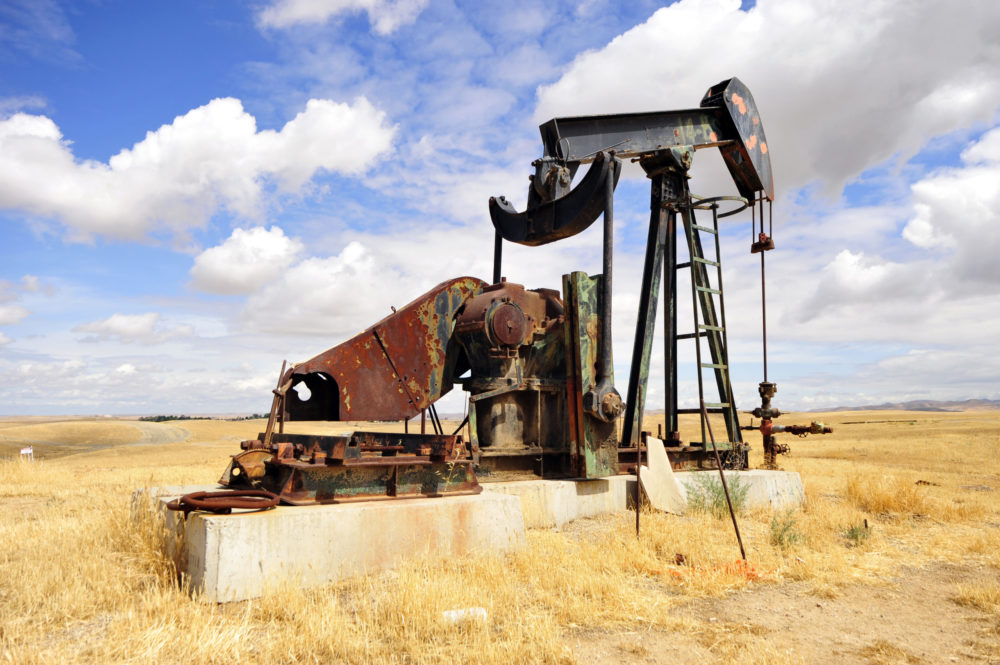Abandoned Oil and Gas Wells Leak Benzene, Other Volatile Organic Compounds, Study Warns
The study calls for more research into whether abandoned oil and gas well emissions pose a health risk to millions of people who live near them across the U.S.

New research highlights serious human health risks that may result from abandoned oil and gas wells, which may leak toxic methane and volatile organic compounds (VOCs) like benzene, which are hazardous and may increase the risk of cancer for area residents.
The toxic chemicals emitted by abandoned oil and gas wells can leak at high flow rates, based on the concentration of the gas or oil stream, researchers warned in a new study published last month in the medical journal ACS Omega, a publication of the American Chemical Society.
Researchers from the PSE Healthy Energy, a nonprofit research and policy institute, analyzed gas from 48 abandoned wells in western Pennsylvania for fixed gases, light hydrocarbons, and VOCs, calculating estimates of emission rates.
Nearly one-quarter of abandoned wells are located within 300 feet of residences and other buildings in Pennsylvania, and researchers warn that leaks from abandoned oil and gas wells pose a risk to surrounding homes and communities.
The research indicates benzene and other VOCs are emitted by abandoned wells, according to the level of the flow rate and concentration of the gas stream. Researchers said benzene was frequently detected coming from abandoned wells, as well as toluene and m,p-xylene, but researchers noted that benzene concentrations “largely dominated potential risk of exposure.”
In addition, methane, a light hydrocarbon, was commonly detected emitting from the abandoned wells, researchers warned. However, methane has long been known to be an emission from oil and gas wells.
“In this investigation, we demonstrate that: (1) gas from abandoned wells contains VOCs, including benzene, a known human carcinogen; (2) VOCs are emitted from abandoned wells, the magnitude of which depends on the flow rate and concentration of VOCs in the gas stream; and (3) abandoned wells are located in proximity to buildings and residences in western Pennsylvania,” the researchers concluded. “Together, these observations indicate that further investigation is necessary to determine whether gas emissions pose an inhalation risk to people living, working, or congregating near abandoned wells.”
Benzene and Volatile Organic Compound Risks
Volatile organic compounds include a group of chemicals that off-gas or release chemicals into the air. The chemicals have carcinogenic effects on animals and humans. VOCs are in a variety of products, from gas, building materials, household products, and personal care products, including tampons and other feminine hygiene products.
Exposure to VOCs can increase a person’s risk of suffering from asthma, developmental problems, reproductive issues, as well as immunological and neurological issues.

Do You Know About...
Childhood Diabetes Lawsuits Against Junk Food Industry
Lawyers are now pursuing financial compensation for families of children diagnosed with Type II diabetes, fatty liver disease and other chronic illnesses caused by addictive and harmful substances in ultra-processed foods.
Learn MoreBenzene is an industrial chemical which has long been linked to fatal forms of leukemia and other cancers such as AML, Chronic Myelogenous Leukemia (CML), Acute Lymphocytic Leukemia (ALL), Chronic Lymphocytic Leukemia (CLL), Hairy Cell Leukemia (HCL), Non-Hodgkin’s Lymphoma, Multiple Myeloma, Myelodysplastic Syndrome (MDL), Myelofibrosis and Myeloid Metaplasia, Aplastic Anemia and Thrombocytopenic Purpura.
Oil and Gas Mining Health Concerns
The Environmental Protection Agency (EPA) estimates there are more than 3.2 million abandoned wells in the U.S., and according to recent research, hundreds of thousands of those may be leaking toxic chemicals into the environment.
More than 57 million people live within 30 miles of oil and gas-producing facilities in the U.S., with more than 1.4 million people in Pennsylvania alone living within a half-mile or less of active oil and gas fracking operations. Previous studies have suggested that distance is within the “threat radius” for harmful effects on residents.
Until now, most studies conducted on emissions from abandoned gas wells were limited to methane. After a lawsuit was filed by various environmental groups, the EPA agreed to reevaluate regulations on the levels of pollution from oil and gas facilities and industrial equipment.
However, the agreement to review wells is limited to active production and not abandoned wells.





0 Comments